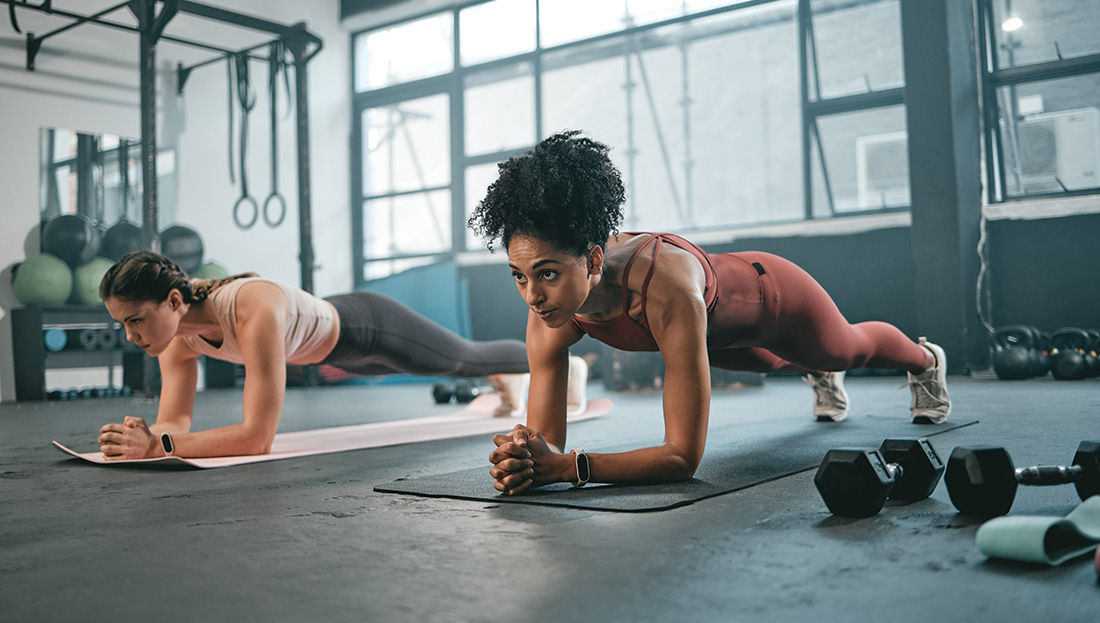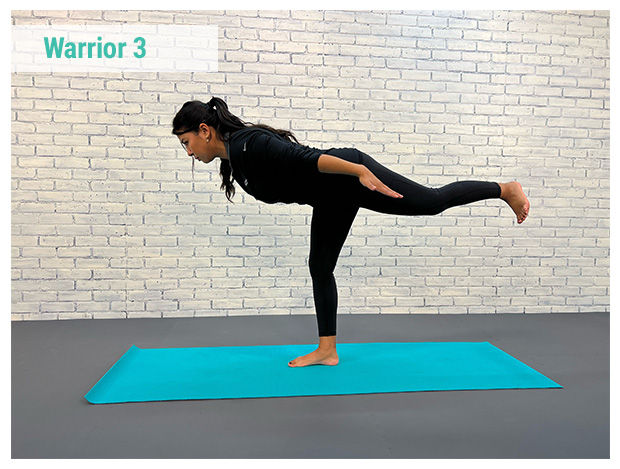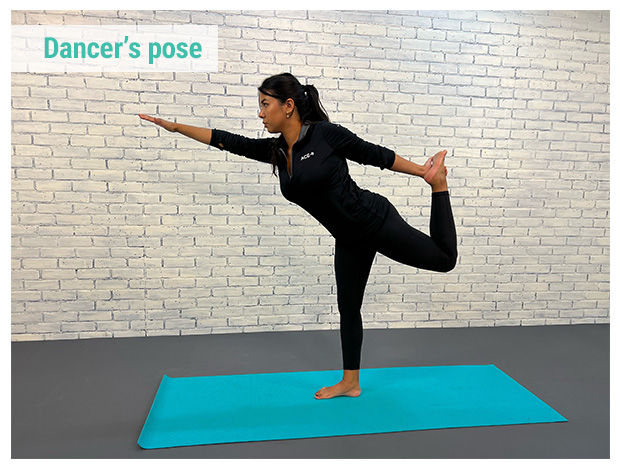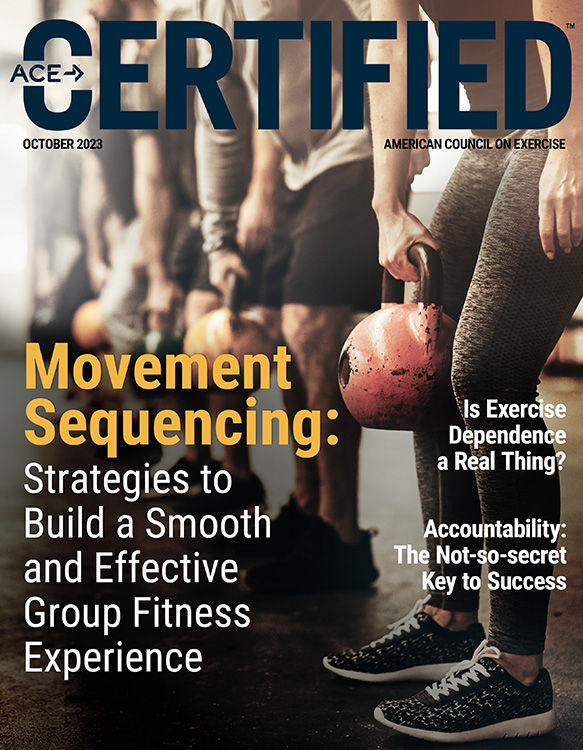
Yoga can sometimes have an air of exclusivity about it. There is a sense that you either take part in a yoga practice as an element of a more mindful and serene lifestyle, or you don’t. And, to begin doing yoga, you have to go to a dedicated studio where you’ll be surrounded by enlightened yogis who will no doubt display intimidating degrees of balance and flexibility.
Many clients have likely said something like this to you in the past: “I can’t do yoga. I’m not flexible enough.” Or they may have back injuries or have trouble getting up and down from the floor. Or they’re athletes who feel like yoga won’t contribute to, or might even hinder, their sport-specific training.
Araceli De Leon, MS, ACE Business and Career Content Manager and a certified 500-hour registered yoga teacher, is here to strip away that exclusivity and empower you to incorporate yoga practices into the muscular-training routines of even your most reluctant clients. De Leon recently led an ACE webinar entitled Applying Yoga to Your Health and Fitness Practice, which outlined strategies for integrating yoga, breath and mindfulness practices into your training repertoire.
Here De Leon explains how yoga can be a complementary modality that can add benefits to just about any muscular-training program you design for your clients.
Scope of Practice Considerations
It’s essential that, as a health and exercise professional, you remain mindful of your scope of practice when introducing new techniques or modalities into your clients’ programs, classes and workouts. Becoming a registered yoga teacher requires hundreds of hours of education and practice, so this article is not meant to imply that you are qualified to do so after reviewing photos of some common poses or even watching an educational video or two.
That said, you can add specific poses, breathing techniques and mindfulness moments to your clients’ training sessions without overstepping your scope. For example, De Leon recommends taking a minute or two to do some breathing exercises during the warm-up or to encourage a client to be particularly mindful of their postural alignment when doing lateral movements. Also, you can add yoga poses to the warm-up and cool-down segments of both sessions and classes. In other words, you can have clients perform their usual workouts, but add appropriate poses and yoga-inspired moments of mindfulness or breathwork.
When it comes to individual poses, you need to have an understanding of how to teach those postures. Lisa (Reynolds) Bevers, a 500-hour registered yoga teacher and owner of Lisa Reynolds Fitness, explains that there is sometimes an overlap between common muscular-training exercises and yoga poses, meaning that you can draw from your expertise as a health and exercise professional when teaching clients new poses. For example, when teaching a client to perform a halfway lift, you can use the same cues as you would when teaching them a deadlift:  keep a flat back and perform a hip hinge without any roundness in the back. Bevers recommends being mindful of common principles that all exercise professionals share (e.g., not locking out the joints, keeping a strong core), as those will serve you well when integrating yoga into a client’s workout.
keep a flat back and perform a hip hinge without any roundness in the back. Bevers recommends being mindful of common principles that all exercise professionals share (e.g., not locking out the joints, keeping a strong core), as those will serve you well when integrating yoga into a client’s workout.
Building Strength and Boosting Performance
Bevers recommends that before adding any yoga poses to a client’s workout you take the time to educate them about the proven benefits of yoga, which include improved mental and emotional health, stress management, improved sleep, enhanced balance, pain management, weight loss, and management of chronic disease symptoms and an associated improvement in quality of life. In addition, yoga has been shown to improve muscular strength and flexibility, and be an effective strategy for blood pressure control.
There are several distinct ways in which yoga—whether that means specific poses, breathing techniques or mindfulness practices—can support clients’ goals related to building strength and boosting athletic performance.
The first, and perhaps most obvious is by increasing mobility, flexibility and range of motion. Bevers says that the number-one benefit that clients are going to see from performing yoga poses is a strengthening of the fascial system through the process of lengthening. Any time a person does lengthening work, or flexibility or mobility work, she explains, it helps to strengthen the fascial system.
For example, if you have a client step back into a reverse lunge with an overhead press, they are going to feel a lengthening all the way up the side of the body that’s stepping back, through the quadriceps, hip flexors and obliques. This serves to strengthen the fascial system, because when a person stretches, their fascia has to lengthen to accommodate the movement.
In addition, many yoga poses can strengthen the stabilizer muscles, which provide support to the prime movers during an exercise and can help to control and stabilize one joint so the intended movement can be performed at another joint. For example, the muscles of the core often serve as stabilizer muscles, as an engaged core can allow for safe and efficient movement in the extremities, such as during a biceps curl or overhead press.
Strengthening the stabilizer muscles, which, in addition to the core musculature, include large muscles in the legs, glutes and back, often involves balancing or plank work. De Leon says that poses such as warrior 3 and a single-leg mountain pose are great choices for working these important muscle groups.
De Leon also points out that many yoga poses activate smaller muscles within muscle groups and can be used as part of the warm-up to prepare the body for muscular-training exercises later in the session. For example, poses that activate the piriformis, gluteus medius, gluteus minimus or the adductor muscle group are great options.
These poses can help address pain or tightness that many clients feel in their hips or low back, which sometimes surfaces as a result of activating the gluteus maximus during a lot of exercises, including squatting, dead lifting and running.
Finally, some yoga poses directly build strength. For example, poses such as boat pose, side plank pose, bird dog, locust pose and baby cobra can help clients develop core strength. Total-body poses include chair pose and warrior 1, 2 and 3. And, for those clients with experience with yoga, more advanced arm-balancing poses include crow and chaturanga.
To sum up, Bevers says that the biggest benefits of adding yoga as a complementary modality during muscular-training sessions are “injury prevention, increased flexibility and, also, helping create deeper degrees of movement around the joints, otherwise known as a deeper range of motion.”
Developing “Mindful Strength”
Yoga can also help clients learn to better activate the proper muscle groups during their workout. Many training clients, De Leon says, “have a hard time engaging the proper muscle groups or understanding what they are supposed to be feeling.” This is true of newcomers to muscular training, as well as clients returning to exercise after an extended time away.

Building the mind-body connection can help clients develop what De Leon calls “mindful strength.” She explains that yoga may help people learn to become hyperfocused on what muscles they’re engaging, particularly during balancing poses like tree pose. If the client becomes disengaged from the core, for example, they are going to fall over, or at least fall out of the pose. Similarly, if a client is in dancer’s pose and begins to deactivate the standing-leg quadriceps, they are going to lose their balance.
In this way, yoga can enhance the mind-body connection that is needed to perform safe and effective muscular training, explains De Leon.
Let the Client Lead the Way
“What’s best for my client today?”
De Leon says that the answer to that question should be the ultimate indicator for what poses or breathwork to add to a workout. This client-centered approach is essential. If a client arrives for their session excited or angry about something at work, incorporating some breathwork into their warm-up might be a good option for helping them calm down and connect more mindfully with the workout to follow.
Another great use of yoga poses involves countering the postures and movements of a client’s everyday routine. For example, if a client spends much of their day sitting at a desk, think about what types of stretching and breathing techniques can be performed to open up the upper body. Examples include cactus pose, camel pose, cobra pose and upward-facing dog. That same client may have tight hip flexors or a stiff lower back, so adding spinal twists or forward folds might be helpful.
Here, De Leon presents a number of the poses mentioned above, as well as others that can be easily integrated into the warm-up and cool-down of a muscular-training session. It’s important to note that not all poses are appropriate for all clients, which is why a client-centered approach is so vital. Let your expertise as a health and exercise professional and the abilities and objectives of your clients be your guide when selecting which poses to incorporate.
Recommended Yoga Poses
|
Halfway lift
|
Plank
|
|
Warrior 1, 2 and 3
|
Single-leg mountain pose
|
|
Boat pose
|
Side plank pose
|
|
Bird dog
|
Locust pose
|
|
Baby cobra
|
Chair pose
|
|
Crow
|
Chaturanga
|
|
Tree pose
|
Dancer’s pose
|
|
Sun salutations
|
Cactus pose
|
|
Camel pose
|
Forward fold
|
|
Cat cow
|
Runner’s lunge
|
A Note About Breathwork
Breathwork, or pranayama, as it’s called in yoga practice, can be a great addition to anyone’s exercise regimen, so you may want to incorporate breathwork during the cool-down period of your clients’ training sessions. In this video clip from the ACE webinar, Applying Yoga to Your Health and Fitness Practice, ACE Pro Araceli De Leon discusses breathwork, how to use it with clients, and which breathing techniques may not be appropriate for everyone. You can learn more about this topic by watching the full webinar, reading 6 Breathing Exercises to Reduce Stress, and checking out this continuing education course: Improving Performance Through Breathwork.





 by
by 

 keep a flat back and perform a hip hinge without any roundness in the back. Bevers recommends being mindful of common principles that all exercise professionals share (e.g., not locking out the joints, keeping a strong core), as those will serve you well when integrating yoga into a client’s workout.
keep a flat back and perform a hip hinge without any roundness in the back. Bevers recommends being mindful of common principles that all exercise professionals share (e.g., not locking out the joints, keeping a strong core), as those will serve you well when integrating yoga into a client’s workout.


